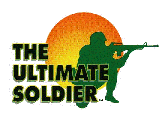By: Zman
|
The First Shot at Gettysburg Day dawned on July 1, 1863 along Knoxlyn Ridge on the outskirts of the town of Gettysburg. Peering into the diminishing gloom were vedettes of the Union Army of the Potomac. Somewhere in the distance, as they looked westward down the Chambersburg Pike from the Wisler farm, a picket post of Company E of the 8th Illinois Volunteer Cavalry, assigned to Col. William Gamble's brigade, observed a gathering cloud of dust in the direction of Cashtown.
The cavalrymen had been posted in a thin line some four miles from town, with advance outposts out an additional 300 yards, from which point they could overlook the bridge crossing Marsh Creek, 700 yards away. These outposts were commanded by Corporal Levi Shafer, whose men had just relieved the night watch. Privates Thomas B. Kelly, and James O. Hale, closely observing the activity in the distance, were sure of its meaning, and sent word for Shafer. "We could make out a column of Confederate infantry with colors flying," Kelly later wrote, "I knew in an instant what kind of work was ahead of us." Kelly galloped back to the rear to give the alert to headquarters. Kelly found First Lieutenant Marcellus E. Jones, at the guard post. His horse already saddled, Jones ordered his whole reserve forward, sent word to his commander at the Lutheran Seminary, and accompanied by his bugler, spurred to the remote outpost to assess the situation for himself. Well he knew that Confederate General Robert E. Lee's Army of Northern Virginia was out there somewhere. The Federal cavalry had been skirmishing with the enemy for several days. As Lieutenant Jones watched the shadowy figures of men marching towards the stone bridge at Marsh Creek, he knew a battle would be fought that day. The gray clad soldiers were the leading elements of Brigadier General James Archer's Tennessee Brigade, Harry Heth's Division, of A.P. Hill's Corps, and they were not showing any hesitancy as they advanced. Jones immediately dismounted, tossing his reins aside to Hale. The men were gathered behind the cover of a fence, the horses concealed. Jones heard one of his men, George Sager, call out the warning, "here they come." As Sager prepared to fire, Jones stopped him, claiming the right to have the honor of opening the battle for himself. Jones borrowed a Sharp's carbine from Corporal Levi Shafer. The lieutenant rested the weapon along the top fence rail to steady it. He took careful aim at an officer mounted upon a white horse. As the Confederates started to cross the bridge over Marsh Creek, Jones fired. The shot was at extreme range, and not surprisingly, did not hit its target, but the opening shot of the battle had been fired. The Confederates began forming a skirmish line preparatory to advancing into action, as they now knew. Jones ordered his horses to the rear and organized a skirmish line to resist the onslaught. Elsewhere on the field, at other picket posts, other vedettes were also beginning to skirmish. A controversy later arose over who actually fired the first shot of the battle, with several claiming the "honor." Years later, Jones, Shafer and others would return to the battlefield and place a marker on the spot where they were in the early morning hours of July 1. In the larger scheme of events, it mattered little who fired the first shot"the greatest battle ever waged on North American soil had begun. |
| Another fantastic project old friend. I've always loved the Civil War stuff since I grew up in Virginia surrounded by battlefields :) Enjoyed reading the text for this one too. Special thanks for sending this one in and sharing it with us. - GL |

Back to the Photos